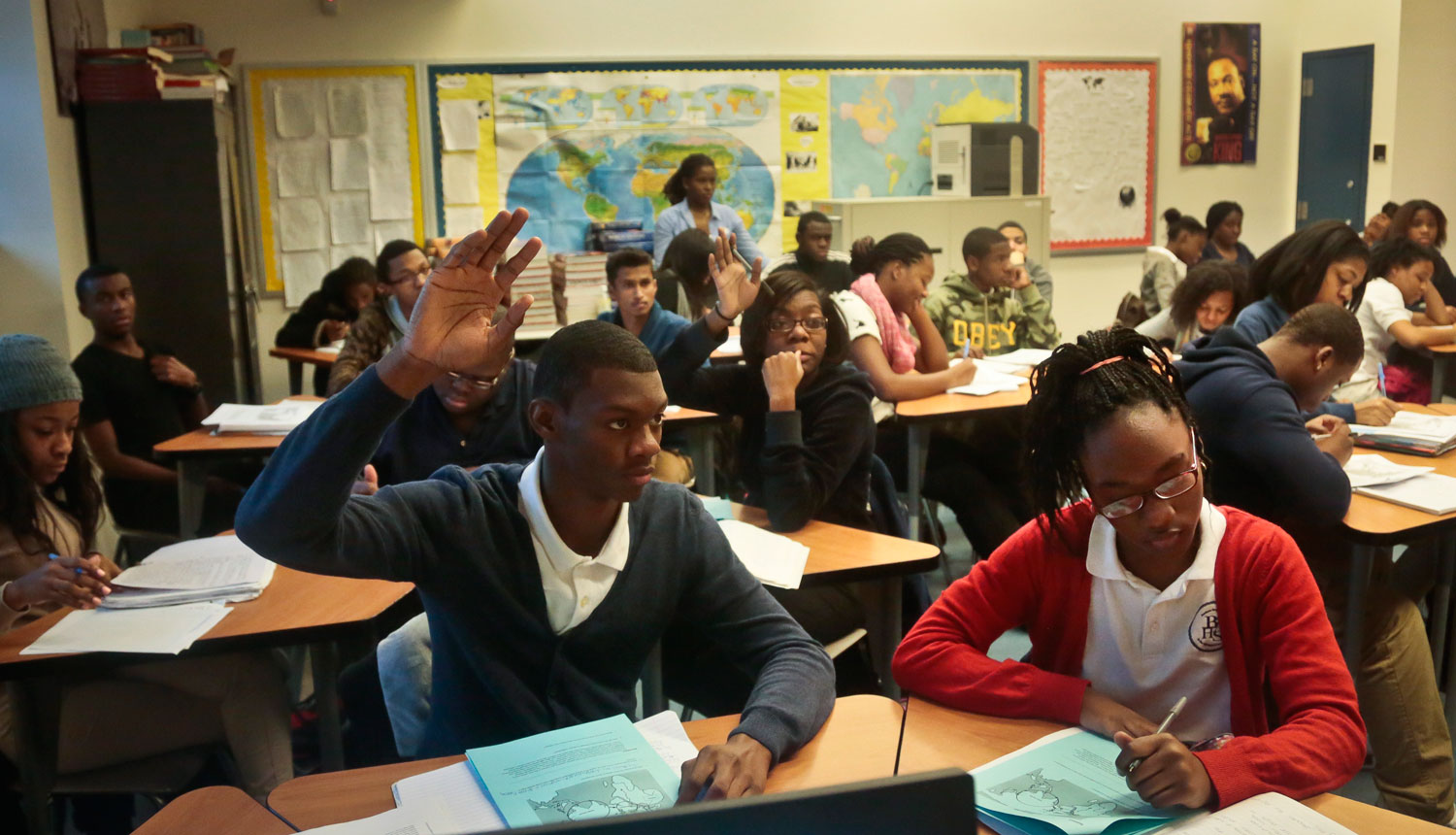
Ever wondered why some students seem to vanish from the classroom to, well, less desirable places? School to prison pipeline is a term that might sound like something out of a dystopian novel, but it's all too real and happening right under our noses. This complex web of policies and practices funnels students from educational institutions into the criminal justice system at an alarming rate. But how does this happen, and why should we care? Buckle up, because we're about to unravel the mysteries behind the 34 best school to prison pipeline facts. These aren't just numbers and policies; they're stories about real lives being diverted from graduation caps to handcuffs. Ready to get schooled on one of the most pressing issues facing our education system today? Let's dive in.
Key Takeaways:
- The school to prison pipeline funnels at-risk students out of schools and into the criminal justice system, often due to harsh disciplinary practices and disproportionate impact on minority students.
- Efforts to dismantle the pipeline include restorative justice programs, policy reforms, increased support services, and community involvement, aiming to keep students in school and out of the criminal justice system.
Understanding the School to Prison Pipeline
The school to prison pipeline is a disturbing national trend where children are funneled out of public schools and into the juvenile and criminal justice systems. Many of these children have experienced learning disabilities, histories of poverty, neglect, and often come from minority communities. This system reflects how school policies and practices may push students, especially those most at risk, away from an educational setting and into the criminal justice system.
-
School to prison pipeline refers to policies and practices that push students, particularly those most at risk, out of schools and into the criminal and juvenile justice systems.
-
Zero tolerance policies in schools, which were initially designed to ensure the safety of students, have in many cases escalated to automatic harsh punishments for minor infractions, contributing significantly to the pipeline.
-
Disproportionate impact on minority students, particularly African American and Hispanic children, who are more likely to face suspension or expulsion for the same behavior as their white peers.
The Role of Zero Tolerance Policies
Zero tolerance policies have played a pivotal role in the expansion of the school to prison pipeline. Initially intended to respond to serious offenses like drug possession and weapon use, these policies have expanded to include a wide range of less serious offenses.
-
Expansion of offenses under zero tolerance has led to students being expelled or suspended for minor infractions such as tardiness, truancy, or dress code violations.
-
Lack of discretion in punishment means that students are often removed from the educational environment for behaviors that could be addressed within the school, further alienating at-risk students.
The Impact on Students and Communities
The consequences of the school to prison pipeline extend beyond the individuals directly affected. They ripple through families, communities, and society at large, perpetuating cycles of poverty and incarceration.
-
Increased dropout rates are associated with harsh disciplinary practices, as students who are suspended or expelled are more likely to disengage from education altogether.
-
Long-term economic effects emerge as students pushed out of school and into the criminal justice system face significant barriers to employment, contributing to a cycle of poverty and incarceration.
-
Community impacts include increased crime rates and decreased community cohesion, as more young people are removed from educational settings and placed into the criminal justice system.
Efforts to Dismantle the Pipeline
Efforts to address and dismantle the school to prison pipeline have gained momentum across the country, with educators, policymakers, and community leaders looking for more effective ways to keep students in school and out of the criminal justice system.
-
Restorative justice programs aim to address the root causes of behavior and work towards reconciliation with victims and the school community, rather than resorting to exclusionary practices.
-
Policy reforms at the local, state, and federal levels are being implemented to limit the use of suspension and expulsion, particularly for minor infractions.
-
Increased support services in schools, such as counseling and mentoring, help at-risk students navigate challenges and stay engaged with their education.
-
Educational equity initiatives focus on closing the achievement gap and ensuring that all students, regardless of background, have access to quality education and the support they need to succeed.
-
Community involvement is crucial in creating a supportive environment for students, with programs that connect schools, families, and local resources to address the broader social issues affecting students.
-
Data-driven approaches to discipline aim to identify patterns and disparities in how disciplinary actions are applied, allowing for more equitable and effective practices.
The Path Forward
Addressing the school to prison pipeline requires a multifaceted approach that involves changing policies, practices, and mindsets. It's about creating an educational system that sees potential in every student and provides the support necessary to turn that potential into success.
-
Holistic education reforms are needed to ensure that schools are safe, supportive environments where all students can learn and grow.
-
Community-based solutions recognize the importance of local context and empower communities to develop tailored approaches to keeping kids in school and out of the criminal justice system.
-
Ongoing research and advocacy are vital to understanding the complex factors that contribute to the pipeline and to promoting policies that address these issues effectively.
-
Collaboration across sectors—including education, justice, health, and social services—is essential in creating a comprehensive strategy to dismantle the school to prison pipeline.
-
Empowering students and families to be active participants in their education and in the reforms needed to end the pipeline ensures that solutions are grounded in the needs and experiences of those most affected.
-
Investment in early intervention programs can identify and address academic or behavioral issues before they escalate, keeping students on track for success.
-
Cultural competency training for educators helps to create an inclusive and understanding school environment that respects and values diversity.
-
Alternative education pathways offer students who might not thrive in traditional settings the opportunity to pursue their education in ways that suit their needs and learning styles.
-
Peer mentoring and support groups provide students with positive role models and a sense of community, reducing feelings of isolation and disengagement.
-
Public awareness campaigns raise the profile of the school to prison pipeline issue and mobilize public support for reform efforts.
-
Legislative advocacy plays a key role in changing the laws and policies that contribute to the pipeline, ensuring that students' rights are protected.
-
Funding for education must prioritize resources for schools serving at-risk populations, ensuring they have the tools and support necessary to address the needs of their students.
-
Professional development for educators focuses on strategies for managing classrooms and disciplining students in ways that promote learning and growth rather than punishment.
-
Building strong student-teacher relationships is foundational to creating a positive school climate where students feel valued and supported.
-
Utilizing technology to support learning and engagement can provide alternative ways for students to connect with their education.
-
Engaging parents and guardians in their children's education creates a partnership between schools and families, reinforcing the value of education and providing a support system for students.
-
Addressing mental health needs within schools ensures that students have access to the services they need to cope with stress, trauma, and other challenges.
-
Creating safe school environments where students feel secure and respected is critical to preventing the alienation and disengagement that can lead to disciplinary issues.
-
Promoting positive behavior through incentives and recognition encourages students to engage in constructive activities and fosters a culture of achievement.
-
Continuous evaluation and improvement of school policies and practices ensure that efforts to dismantle the school to prison pipeline are effective and responsive to the needs of students.
Piecing Together the Puzzle
Understanding the school-to-prison pipeline is crucial for fostering change. This complex issue, woven from threads of policy, practice, and societal attitudes, demands our attention and action. Recognizing the pivotal role education plays in shaping futures, it's clear that interventions are necessary at multiple levels. From revising disciplinary policies to enhancing support systems within schools, every step taken can steer vulnerable students away from paths leading to incarceration. Community involvement, along with informed policy-making, can break this cycle, offering hope and opportunities where there were once barriers. By addressing the root causes and implementing holistic solutions, we can transform the narrative for future generations, ensuring that schools are gateways to success, not pipelines to prison. Let's commit to this change, for the sake of all students and the broader community.
Frequently Asked Questions
Was this page helpful?
Our commitment to delivering trustworthy and engaging content is at the heart of what we do. Each fact on our site is contributed by real users like you, bringing a wealth of diverse insights and information. To ensure the highest standards of accuracy and reliability, our dedicated editors meticulously review each submission. This process guarantees that the facts we share are not only fascinating but also credible. Trust in our commitment to quality and authenticity as you explore and learn with us.


